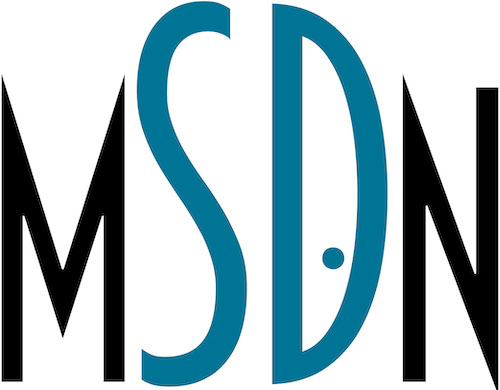Chris, my husband, and I began a healthy habit this winter. Each morning, with breakfast, we mix a packet of Emergen-C in a glass of water. Emergen-C is a powder that helps to boost the immune system and provides nutrients such as antioxidants and electrolytes. Since we began taking Emergen-C we have not been sick. While I fully admit, this may be a coincidence, I do appreciate the feeling that we are starting off our day by doing something healthy.
Spring, in the gardening world, is similar to the dawn of a new day. It is a chance to start afresh and do something good in the world, specifically in the portion of the world that is our yard. While many of the nutrients that our plants need are provided through the soil, there are fertilizers that, when applied correctly, can greatly benefit our plants. This column will address types of fertilizers, examples of each and the importance of correct application.
There are 17 essential nutrients that all plants require. Carbon, hydrogen, and oxygen are three of those nutrients that plants receive from air and water. Nitrogen, potassium and phosphorous (NPK) are classified as macronutrients because plants require them in larger quantities. Iron, calcium, and magnesium are classified as micronutrients because they are necessary but in much smaller amounts. The nutrients that are available in the soils vary based on the soil type, texture and pH. While many tests such as the ribbon test or jar test can be performed at home, you can also send samples of your soil to a laboratory. A soil testing laboratory will test for macro and micronutrients as well as soil pH and the levels of organic matter present. Information on soil testing laboratories in the area is available through the University of Illinois Cooperative Extension Service website. www.extension.illinois.edu.
Plant fertilizers can be grouped as either inorganic or organic fertilizers. Organic fertilizers are created using living organisms and as such are carbon based. Here are a few examples of organic fertilizers.
Milorganite – This is a fertilizer that is a produced by the Milwaukee Sewage Treatment Plant. It is created when the microbes that digest the nutrients in the wastewater are dried in a kiln and turned into small pellets. It is a slow-release fertilizer that doesn’t burn the plants due to its low nitrogen value.
Mushroom Compost – Mushroom compost is a mixture of horse manure and other materials that were previously used by mushroom farmers. After the mushroom farmers are done harvesting their crop, the material is composted and steam pasteurized. Five percent of a healthy soil should consist of organic matter. Mushroom compost is a great way to add organic matter to soil.
Fish Emulsion – This type of fertilizer is generally available in liquid form and can be used in as a soil drench or foliar spray. It is a quick acting fertilizer that is used, in part, to support lush foliage.
Dr. Earth Bud and Bloom Booster – This is both a quick release and slow-release fertilizer. Nutrients from both plants and fish are contained in this product. The mycorrhizae contained in this product assists plants roots in absorbing water and nutrients. As the name implies, it encourages plants to set more flower buds resulting in more numerous flowers.
Worm Castings – This fertilizer is naturally created by worms as they decompose their food. Politely stated, it is worm excrement. This product helps to aerate the soil and improves pest and disease resistant in the plants.
Inorganic fertilizers are manufactured fertilizers that do not contain carbon. Here are a few examples of inorganic fertilizers.
Osmocote – This is a slow-release granular fertilizer. This fertilizer, when mixed into the soil, will continue to release nutrients over several months. It is a versatile fertilizer that can be used on indoor and outdoor plants.
Miracle Gro Water Soluble Plant Food – This is a powder fertilizer that needs to be mixed with water prior to application. It offers nutrients in a form that they are immediately available to the plants and is a very good all general fertilizer.
All Purpose Fertilizer – Marketed under several trade names, these types of fertilizers are usually granular fertilizers that offer high amounts of nitrogen, phosphorous and potassium (NPK). The numbers on the front of the fertilizer bag or box refer to the levels of NPK.
While there are many benefits to each type of fertilizer, organic fertilizers improve soil structure, are non-burning due to their slow release and increase the amount of organic matter in the soil. Inorganic fertilizers offer nutrients that are readily available to the plants and are generally less costly.
All fertilizers should have a guaranteed analysis rating on the packaging. This rating will give you specific information as to the levels of nutrients that are in the product.
It is crucial that all fertilizers and other plant care products are applied only according to the package directions and only as needed. Environmental conditions such as wind, predicted precipitation and air temperature should also be observed prior to making the decision to apply any fertilizers. Spring is usually a good time to fertilize plants. As a general rule of thumb, fertilizers should not be applied after about mid-August. At this time of year, plants should be preparing for dormancy, not beginning a period of rapid growth. It is also important to avoid fertilizing drought stressed plants. While fertilizers won’t cure plant problems such as an insect infestation or stress due to a disease, fertilizers can assist healthy plants to develop strong root systems, create growth that is lusher and encourage more flowers.
Incorrect application of fertilizers has the potential to cause stunted growth and can even result in the death of the plant.




